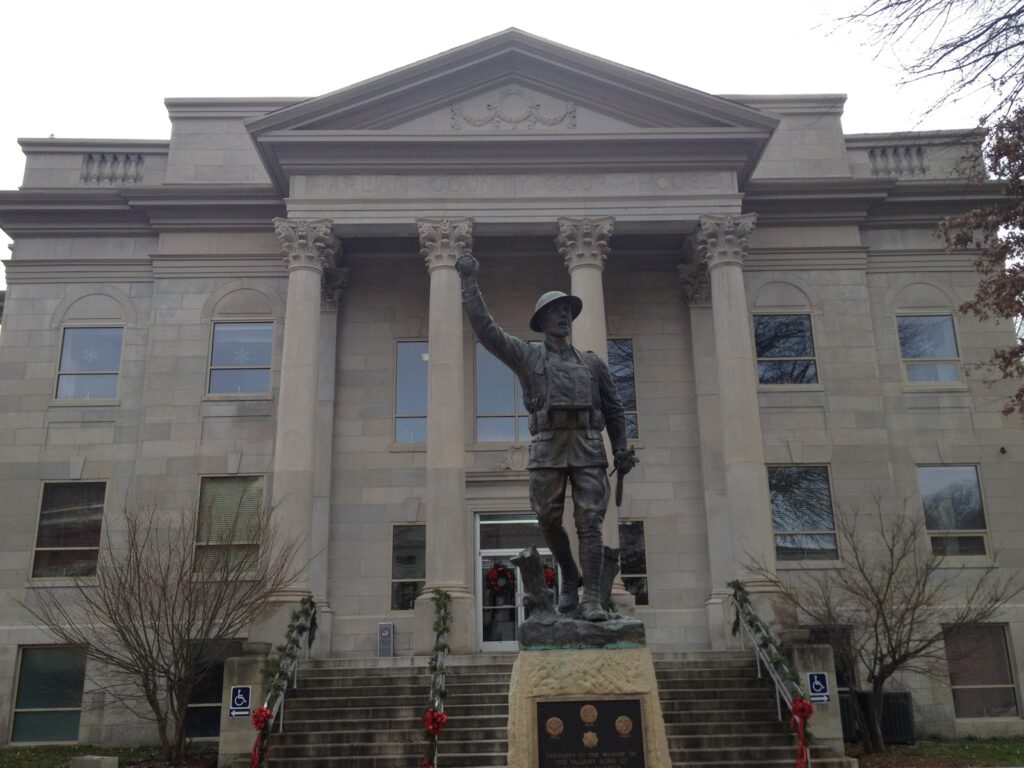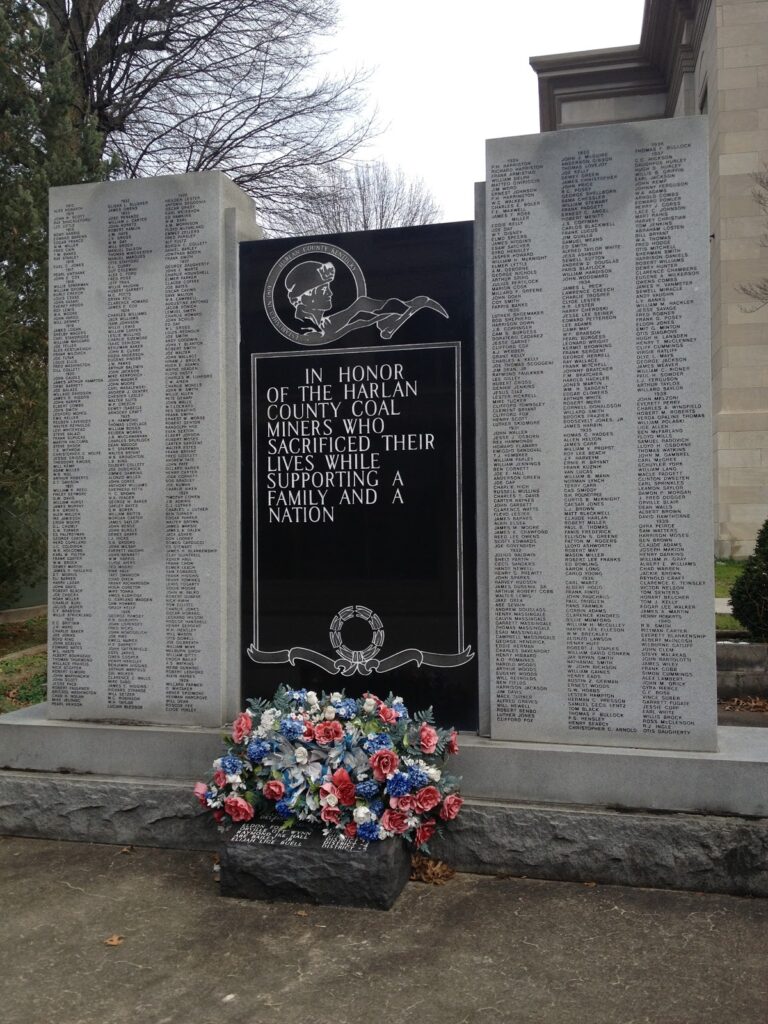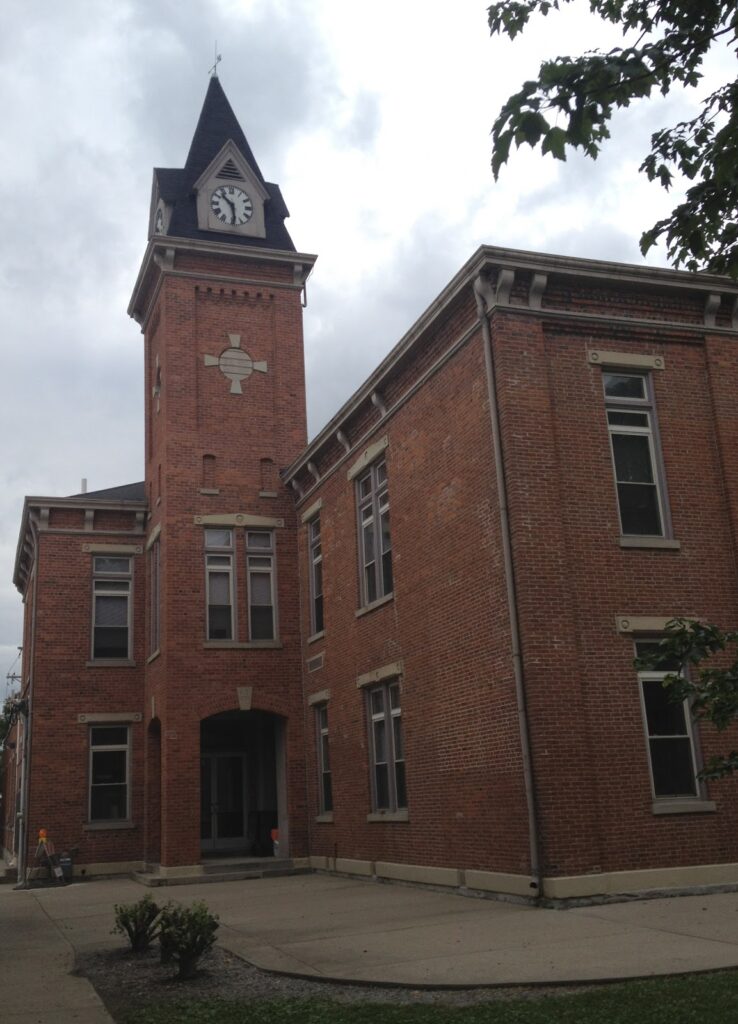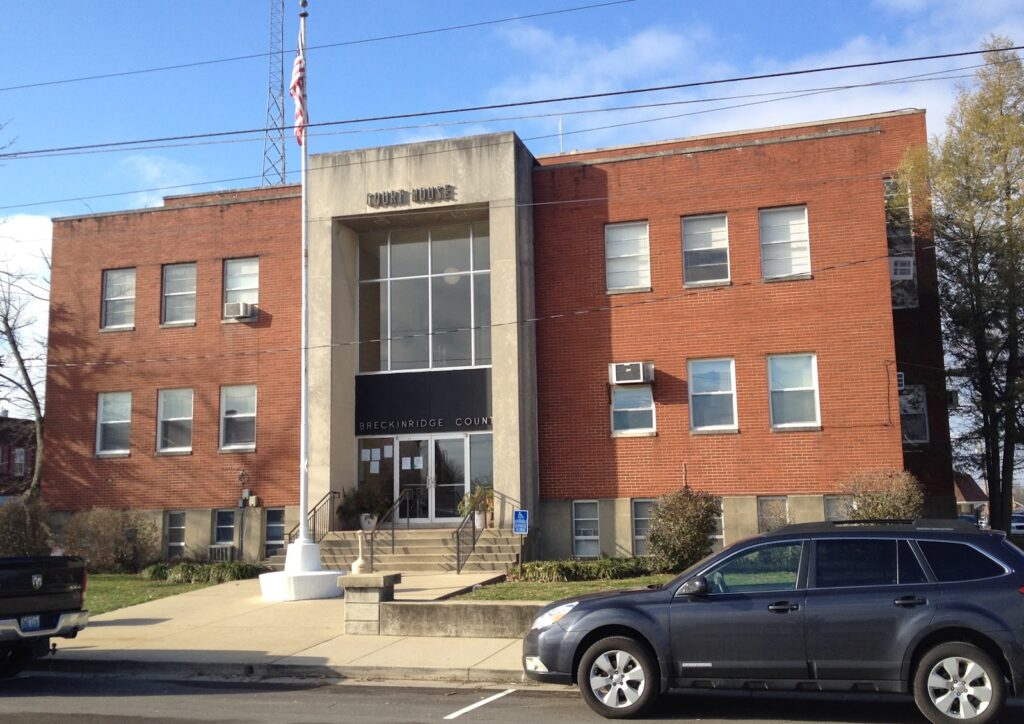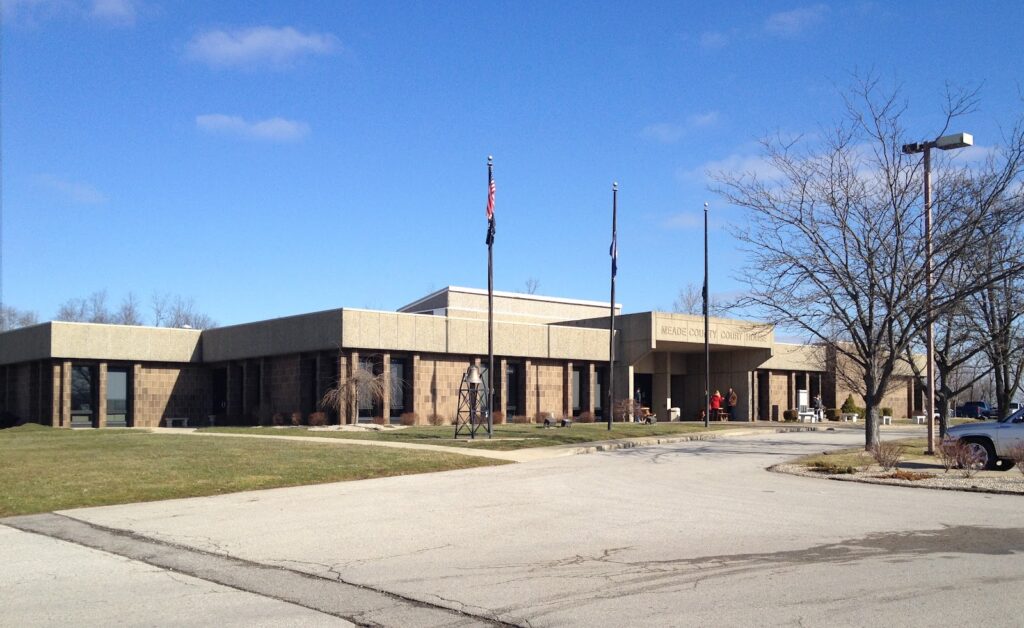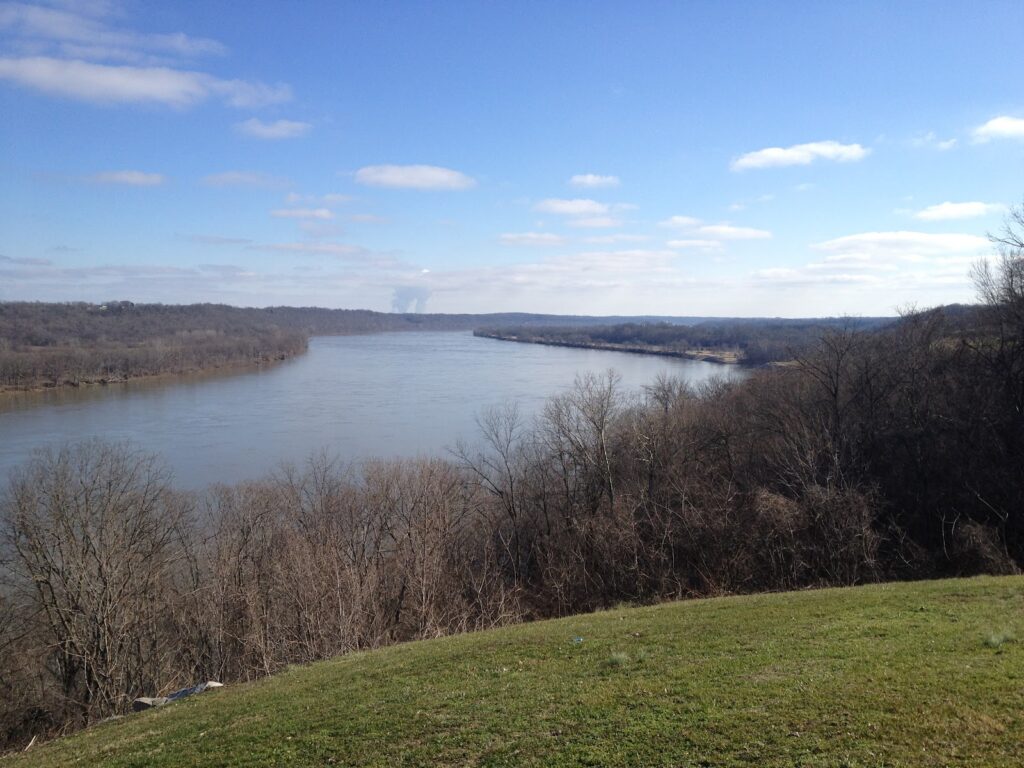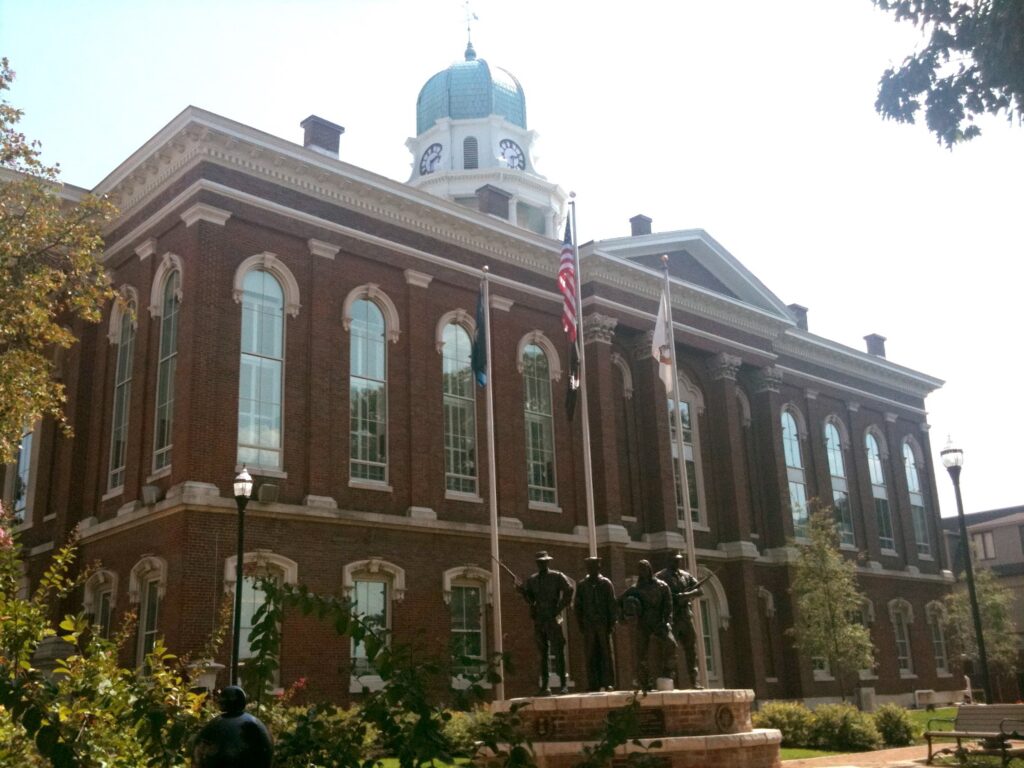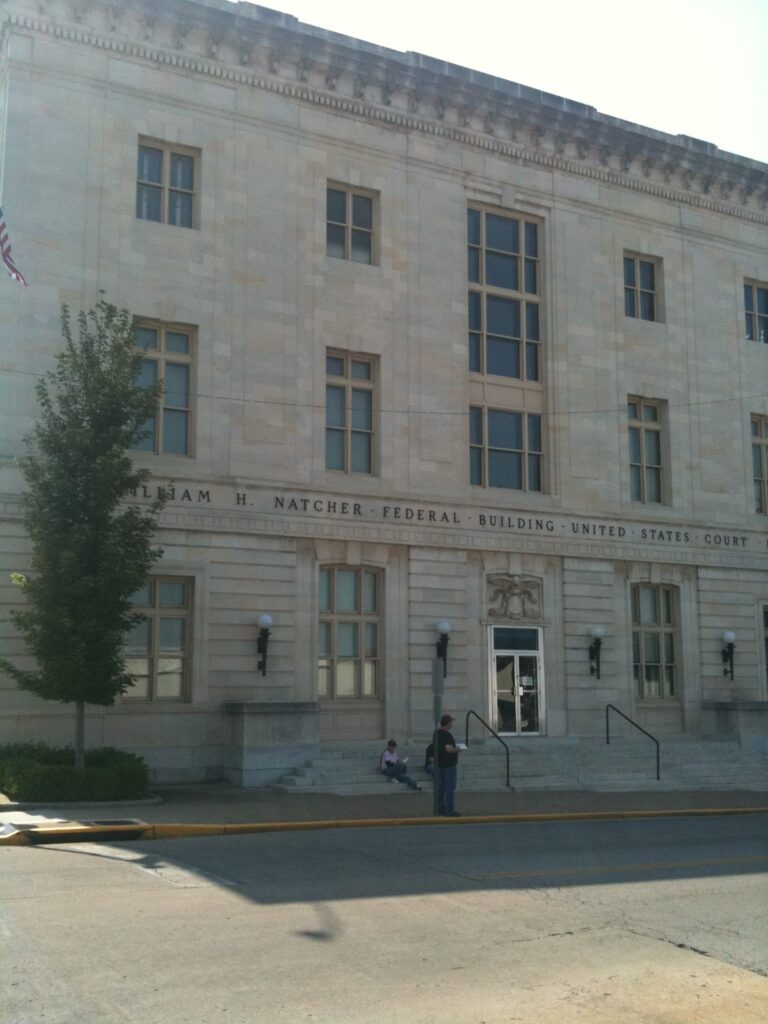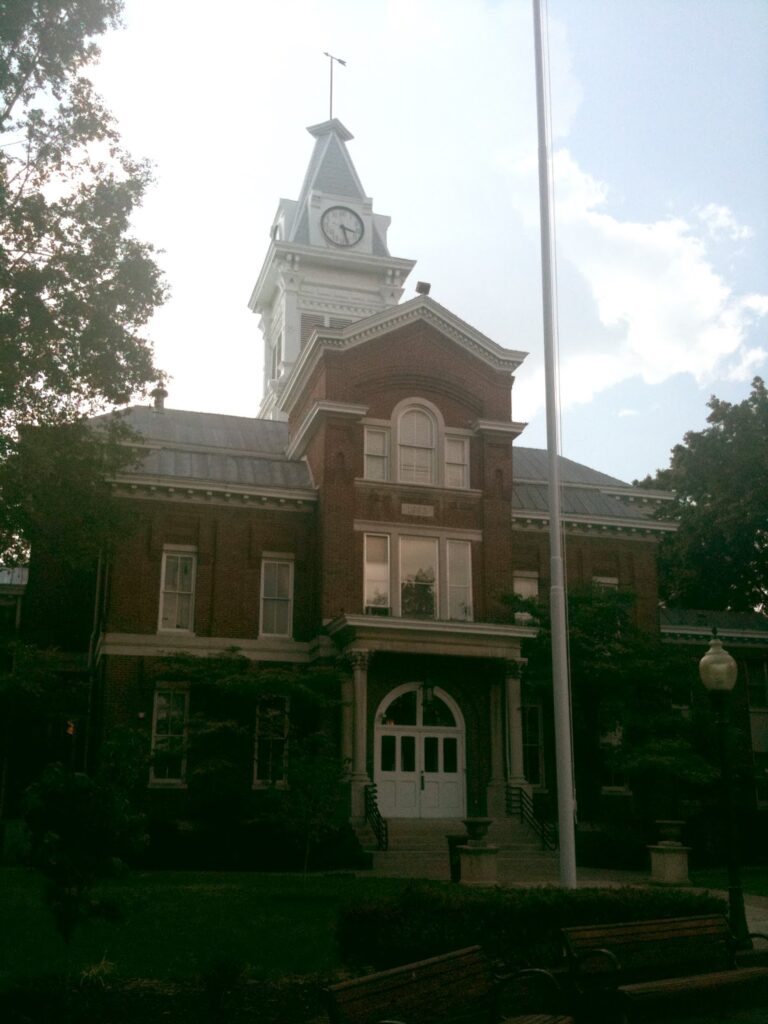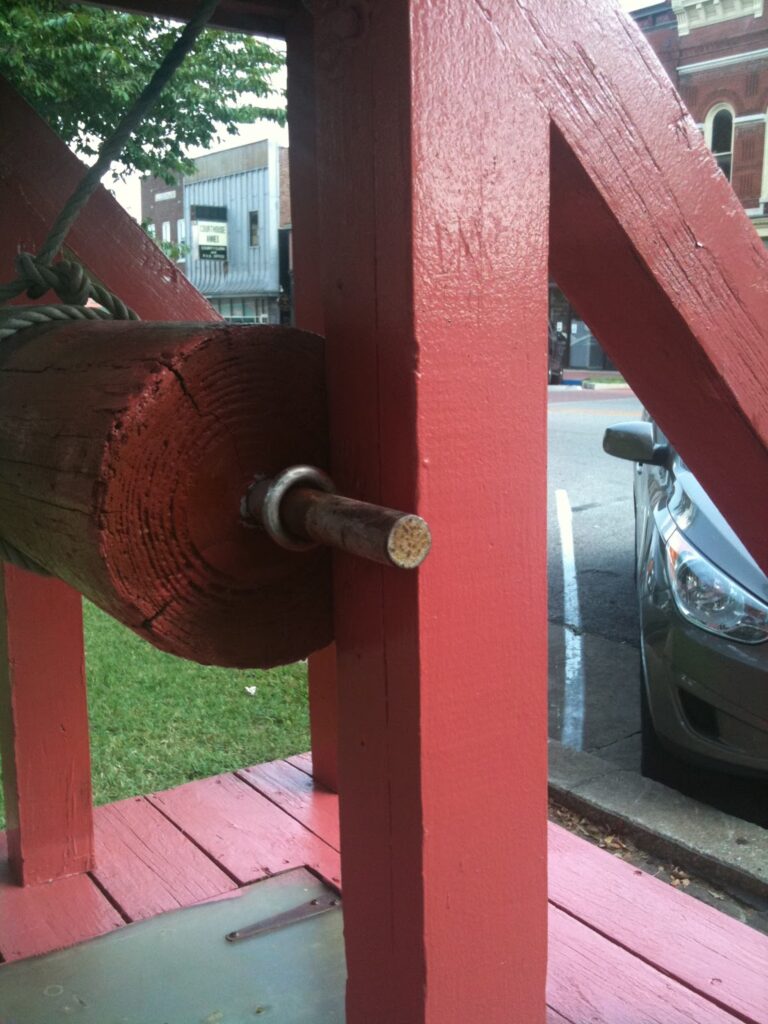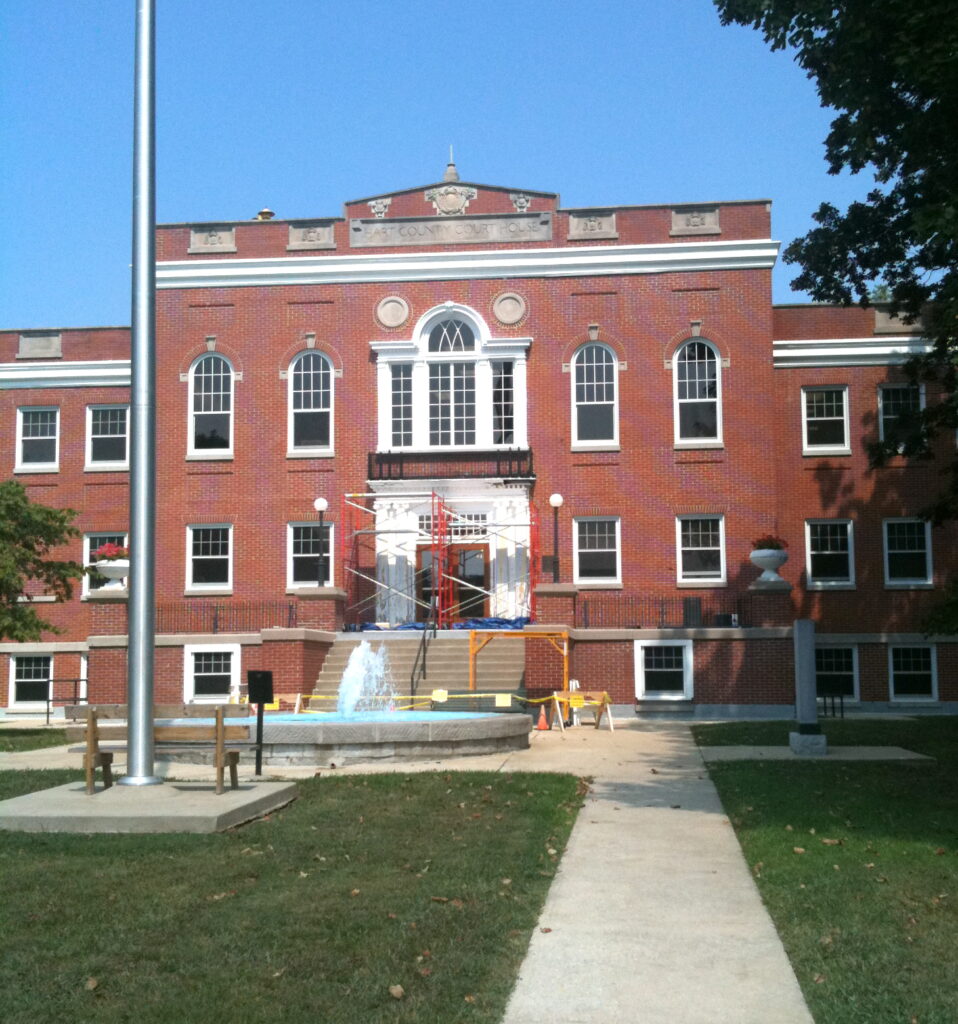 |
| Robertson County Courthouse – Mt. Olivet, Ky. |
One of the things I’ve always tried to stress with my entries on this blog is how special it is when you can find living history in Kentucky. So many buildings have been demolished; so many stories have been forgotten.
That is why a place like the Robertson County Courthouse is so important.
The building you see above is the only courthouse that has ever stood in Robertson County, and it is a beautiful structure. I have never had the chance to practice in Robertson County, and I keep waiting for a case to happen there that I can swoop in and take, just so I can make appearances in this courthouse.
 |
| The courthouse renovation project saw an annex added to the historic 1872 structure. Photo: Peter Brackney. |
It was built in 1872, and when it was half completed, the project ran out of money. The Masons fronted the necessary $1,500 to finish the second floor, and that space was reserved for their use. This structure, which is of Italianate design, was said to be the only brick structure in the county when it was completed.
Robertson County is tiny. In fact, it’s only about 100 square miles. Even with its tiny size, some remarkable history has taken place here. It is the site of what many believe to be the final battle of the Revolutionary War – the Battle of Blue Licks – where in 1782 a group of Native Americans, led by the British, ambushed 176 Kentuckians.
And here’s a weird note – at one time, county seat Mt. Olivet, which is obviously a name with Biblical implications, was called “Hell’s Half Acre.”



